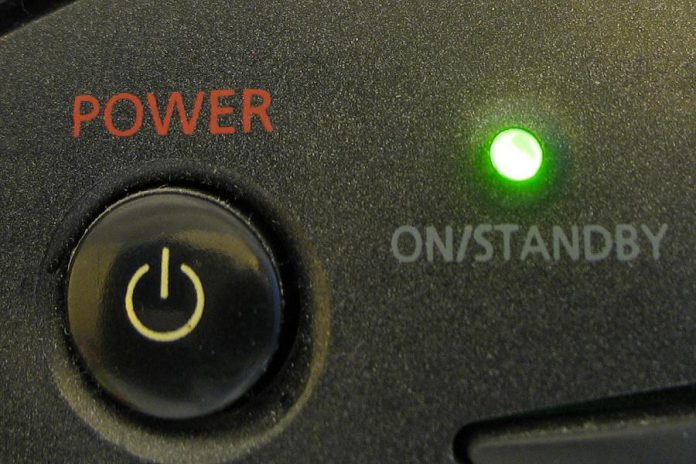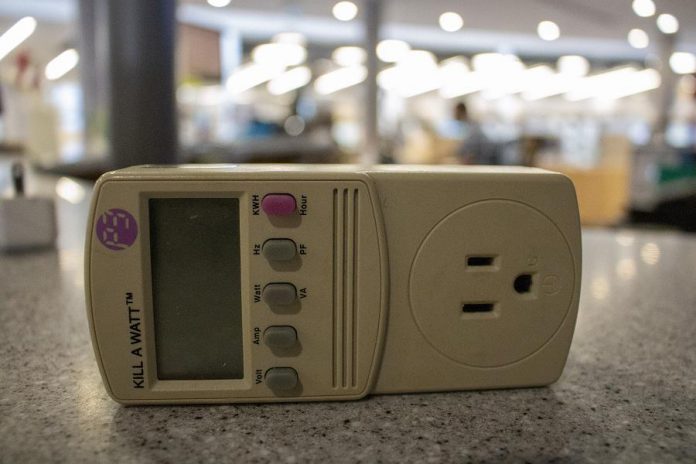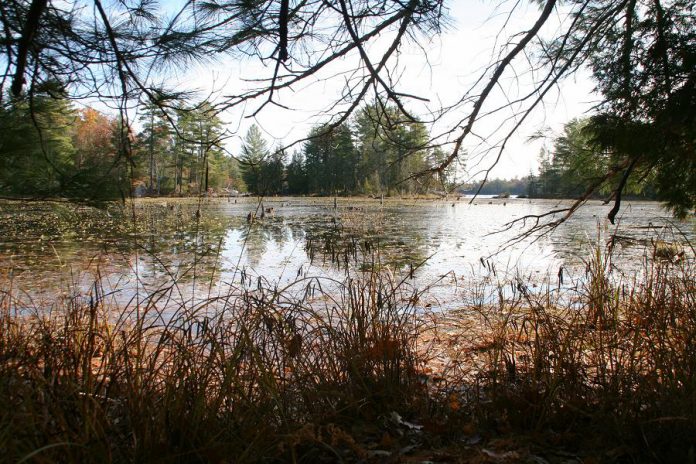
Halloween has origins in the ancient Celtic new year festival of Samhain. During Samhain, it was thought that communication and connection was stronger between worlds and between the past, the present, and the future.
I hope that connection is particularly strong for Halloween this year, since political leaders from around the world will be meeting in Glasgow starting on October 31 for the 26th United Nations Climate Change Conference (also known as COP26). We need all world leaders to connect the dots on emissions reductions for a sustainable future. As Riff Raff says in The Rocky Horror Picture Show, “time is fleeting.”
What’s COP26 and why does it matter? Stay tuned to media coverage of this event, and in next week’s GreenUP column we’ll talk more about COP26. Right now, in the spirit of Halloween, let’s identify four kinds of ghost-busting action we can tackle in our daily lives.
1. Phantom power
The album Phantom Power by the Tragically Hip was big, but this spooky phenomenon is big enough to haunt every house and office building: phantom power happens when electrical devices are left plugged in and continue to draw power even when they are off.
Vampire gadgets can suck 10 per cent of the life out of your home’s energy use, or as much as $150 per year.
Which phantom power vampires are the most horrific?

Typically, it’s desktop computers, video game consoles, and compact stereo systems. Laptops, computer speakers, and speaker/smartphone docks are less terrifying but still significant.
Garlic cloves and wooden stakes to the heart will not help you fight these vampires. Your standby weapon of choice is an automatic timer. Plug those phantom power devices in to a timer or a powerbar with a timer on it.
Schedule the timer to shut off when you are asleep or not using those devices.
2. Inter-dimensional portals in your home
Unlike 55 Central Park West (aka the “Ghostbusters Building”), your home was probably not intentionally built to invite spiritual turbulence. Nonetheless, homes often do invite chilly drafts inside through gaps in the building envelope, resulting in energy waste.
You can improve your home’s energy efficiency — and your comfort — by sealing up these energy portals.
Visit greenup.on.ca/climate-action-at-home to discover the series of Climate Action at Home videos GreenUP recently made with the City of Peterborough and Peterborough County.
There are plenty of DIY tips and tricks there to help you keep chilly, energy-wasting ghosts out of your home this winter.
VIDEO: Climate Action At Home – DIY Draft Proofing
3. Burning ghosts
While we’re talking about energy efficiency, we should also talk about burning ghosts. By “burning ghosts”, I actually mean burning fossil fuels, which are the ghostly (often goopy) hydrocarbon remains of long-dead dinosaurs, plants, and other organic matter.
Beyond the terrifying global warming implications of burning fossil fuels, this undead method of generating energy is also ghoulishly inefficient — think of the classic mindless, clumsy, shambling zombies and not the super-efficient fast zombies in Army of the Dead.
If you feed one dollar of energy to an older, mid-efficiency gas furnace, it will typically deliver only 60 cents worth of heat for your home — the other 40 cents are wasted as exhaust heat.
That’s why it is all the more important to seal up those hidden portals in your home’s envelope. Every step towards a more efficient home matters, especially as we transition towards more efficient and sustainable energy sources than gas.
Another place we need to avoid burning ghosts is in our electricity grid. According to the Government of Canada, “in 2018, about 96% of electricity in Ontario was produced from zero-carbon emitting sources: 60% from nuclear, 26% from hydroelectricity, 7% from wind, and 2% from solar.” The remaining three to four per cent of electricity was generated by burning natural gas.
By phasing out coal, Ontario has made great progress to ensuring future generations will be less haunted by today’s phantoms — but we still need to build capacity in renewable energy generation.

4. Will-o’-the-wisp
Have you ever heard of will-o’-the-wisp, ignis fatuus (“foolish lights”), jack-o’-lantern, or hobby lantern? These names refer to a host of phenomenon and folk beliefs about mysterious, ghostly lights seen by travellers at night, especially around wetlands.
These lights lead travellers astray. In fiction, will-o’-the-wisp has come to represent a hope or goal that leads you on but is impossible to reach — or ends in finding something sinister and strange.
What’s even more spooky is that these fantastic lights have a basis in scientific fact. Natural phenomena can produce lights, like bioluminescence (think fireflies and glowing algae), chemiluminescence (think glow sticks, but don’t buy them because #SingleUsePlastic), and oxidation of gases produced by organic decay.
Never seen these lights yourself? Neither have I. There has been a marked decline in reports of will-o’-the-wisp in recent decades due to the draining and disruption of wetland habitats. In southern Ontario alone, over 70 per cent of wetlands have been erased by development. You can learn more about the many gifts of wetlands in this article we published last year.
Canada is home to a quarter of the world’s remaining wetlands. A quarter of those (or six per cent of the world’s remaining wetlands) are found in Ontario. We have a large responsibility to protect and restore these wetlands.
The wetlands in Canada store approximately 150 billion tonnes of carbon, keeping it from being released into the atmosphere and contributing to global warming. Wetlands help purify water, and they play an essential role in storing stormwater run-off and mitigating severe flooding. Wetlands also help to reduce the impacts of drought.

Those are just four spooky, Halloween-themed ways to think about waste and take action.
Watch for next week’s column when we will talk with experts about the historic COP26 and the commitments of nations around the world to climate action and habitat protection.
Until then, happy Halloween, and good luck fighting the phantoms of power waste in your life.


























